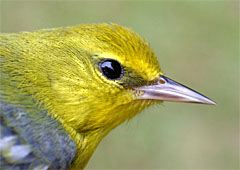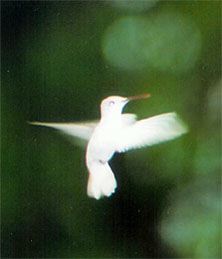|
|
|||
THIS WEEK at HILTON POND
22-31 August 2004
Installment #236---Visitor #
(Back to Preceding Week; on to Next Week)
|
|
|
|
|||
THIS WEEK at HILTON POND
22-31 August 2004
Installment #236---Visitor #
(Back to Preceding Week; on to Next Week)
|
|
|
A DIFFERENT MIMOSA, Across the Carolina Piedmont, hordes of plants from the Orient have found the region's red clay, ample rain, and mild winters very much to their liking. Our least favorite Asian import is the infamous Kudzu, Pueraria lobata, a fast-growing, tree-smothering vine we're grateful to have none of at Hilton Pond Center. Despite the local success of these Far Eastern interlopers, the one foreign invasive we'd actually LIKE to have but can't seem to encourage at the Center is Mimosa, Albizia julibrissin (above left). This pink-flowered sweet-smelling tree--when kept in check--can be a real magnet for hummingbirds, native bees, and butterflies, but for some reason has not survived on our Hilton Pond acreage. In its absence we actually have another much-smaller Mimosa--Mimosa microphylla, the Little-leaf Sensitive Brier--a plant whose flowers are delightful to behold but whose real claim to fame is its behavior. "Plant BEHAVIOR?" you ask. Yes, plant behavior.
All text, photos & movies © Hilton Pond Center Unlike the Mimosa tree--which originally occurred from Iran to Japan and now is found across temperate North America--M. microphylla grows naturally in the southeastern U.S. as far west as Texas; it is considered "very rare" and subject to possible extirpation in Virginia. And while Asian Mimosa is a woody tree that reaches 40 feet in height, its smaller local namesake is a perennial herbaceous vine whose green stems wind along the ground or ramble over low walls and shrubs. The 3-to-6-foot stems grow from a taproot that allows Little-leaf Sensitive Brier to overwinter underground and get a head start when warm days of spring arrive. We found our first plant at Hilton Pond Center back in the mid-1980s in a spot that is now too-shaded by new-growth trees; the specimen depicted on this page is in full sun on the Center's road frontage--right where road crews are likely to whack it back next time they cut vegetation along the shoulder. One vine from the taproot grows flat along the substrate, while the other has managed to find vertical support from low branches of an Eastern Red Cedar, Juniperus virginiana (large bottom photo). The pink "powderpuff" blossom of Little-leaf Sensitive Brier is reminiscent of that of Mimosa trees, but to our eye it has much better form. Perfectly spherical and about three-quarters of an inch across, the flower heads erupt along the stem and are quite complex. Both Mimosa and Little-leaf Sensitive Brier are classified in the Fabaceae (Pea Family), so one should not be surprised to find that seeds from each are borne in pods. Mimosa's fruit ripens in a more typical pea pod (see top photo), while that of Little-leaf Sensitive Brier is produced in a 3-6" spiny, downy, awl-shaped structure in which lies a row of tiny seeds. Members of the Pea Family are also known as "legumes"--plants that harbor nitrogen-collecting bacteria in nodes on their roots. Like soybeans and other legumes, Mimosa and Little-leafed Sensitive Brier help enrich land on which they grow by returning nitrogen to the soil. Incidentally, one problem native plant enthusiasts will encounter when seeking information about Little-leaf Sensitive Brier is that it has been known by a confusing variety of scientific names. First described by Swedish botanist Jonas C. Dryander in the late 18th century, it was "misidentified" or "rediscovered" so many times that the scientific literature lists a dozen synonyms--the most common being Schrankia microphylla. To learn more about the subject of this week's photo essay, we also need to dissect its common name: Little-leaf Sensitive Brier. Like many legumes, this plant has compound leaves, but in this case they are doubly compound; i.e., the petiole comes off the stems and is divided into leaflets that, in turn, are divided into subleaflets. These subleaflets are less than a quarter-inch long--hence the name "Little-leaf." The "Brier" part of the name pertains to inconspicuous decurved thorns (above right) that grow along the main vine, on the flower stalk, and on the midrib of the main leaf petiole. In spite of being less than an eighth-of-an-inch long, these briers are quite sharp and can easily lacerate a bare ankle or ungloved hand. (NOTE: A second thorned species, Mimosa quadrivalvis floridana, occurs in the Coastal Plain of Georgia and Florida, while a thornless type, M. strigillosa, grows just in Florida.)
All text, photos & movies © Hilton Pond Center The most interesting aspect of Little-leaf Sensitive Brier we have saved until last--that being its "sensitivity." If you tap even lightly the leaves of this plant, there is an immediate change in osmotic cell presure that causes leaflets to point away from the main vine and subleaflets to fold in on themselves. This reaction--similar to the closing of a Venus' Fly Trap--occurs rapidly and has the function of protecting leaflets from herbivores by exposing all those sharp little briers. Curiously, a leaflet of Little-leaf Sensitive Brier doesn't have to be touched directly to fold; mere vibration from an adjoining leaf closing can cause an entire vine to fold its leaves in chain reaction. (Double-click on the image below to play a QuickTime movie of wind-blown leaflets folding in response to human touch; note also the small Hoverfly coming in for a sip of nectar.) When disturbed, most flora simply sit there and take it, but the big Mimosa tree and Little-leaf Sensitive Brier actually respond to their environment. In the case of the tree, its leaves often fold at sunset or during rains and then re-open when the sun strikes them. By comparison, the more complex touch-response in Mimosa microphylla at Hilton Pond Center leads us to think that "plant BEHAVIOR" is a perfectly legitimate term for what happens in the leaflets of our sensitive little legumes. All text, photos & movies © Hilton Pond Center
Comments or questions about this week's installment? NOTE: Be sure to scroll down for an account of all birds banded or recaptured during the week, as well as some other interesting nature notes. "This Week at Hilton Pond" is written & photographed You may wish to consult our Index of all nature topics covered since February 2000. You can also use the on-line Search Engine at the bottom of this page. For a free, non-fattening, on-line subscription to "This Week at Hilton Pond," just send us an E-mail with SUBSCRIBE in the Subject line. Please be sure to configure your spam filter to accept E-mails from hiltonpond.org.
|
|
Make direct donations on-line through
Network for Good: |
|
|
LIKE TO SHOP ON-LINE?
Donate a portion of your purchase price from 500+ top on-line stores via iGive: |
|
|
Use your PayPal account
to make direct donations: |
|
|
|

Blue-winged Warbler SPECIES BANDED THIS WEEK: * = New species for 2004 WEEKLY BANDING TOTAL
YEARLY BANDING TOTAL
BANDING GRAND TOTAL NOTABLE RECAPTURES THIS WEEK NONE THIS WEEK
|
OTHER SIGHTINGS OF INTEREST --It's interesting that the American Goldfinch captured on 31 Aug at Hilton Pond was an adult female with active brood patch, indicating she was still sitting either on eggs or chicks. Nearly all our other local bird species have finished breeding for the year; Mourning Doves and goldfinches are notable exceptions. |
 ...... ......
All text © Hilton Pond Center; white hummingbird photos © Kathy Greene Try as we might on two mornings this week, we were unable to induce a white hummingbird--probably a Ruby-throated--to enter our portable trap when we deployed it at the home of Kathy Greene in Sharon SC, less than 8 miles west of Hilton Pond. We hoped to band Kathy's unusual hummer, but over a total of five hours it flew to and sat on the trap without ever going to the sugar water feeder we placed inside. On one overcast day before our visit, Kathy took a photo (above left) clearly showing the hummer had some pale tan spots and a black bill, eye, and feet; in other words, it was "leucistic" rather than a true albino. What's really curious is that a few days after our unsuccessful trapping attempts, Kathy took another photo (above right) that looks for all the world like an albino hummingbird with pink eye and pinkish-orange bill and feet. We're not positive, but the second photo may have been taken with electronic flash--which might account for a significant color shift and the "red-eye" effect. (And just what color IS eyeshine in hummingbirds?) We should note that a couple of leucistic hummers we handled had bills that in good light appeared more brown than black, which may be the case in the bird at upper right. Nevertheless--and as impossible as it might seem--it may be that Kathy actually had TWO white hummers at her rural feeder, one leucistic and one albinistic. |
|
(Back to Preceding Week; on to Next Week)
 You can also post questions for The Piedmont Naturalist |
Join the |
Search Engine for |
|
Up to Top of Page Back to This Week at Hilton Pond Center Current Weather Conditions at Hilton Pond Center |
|
|